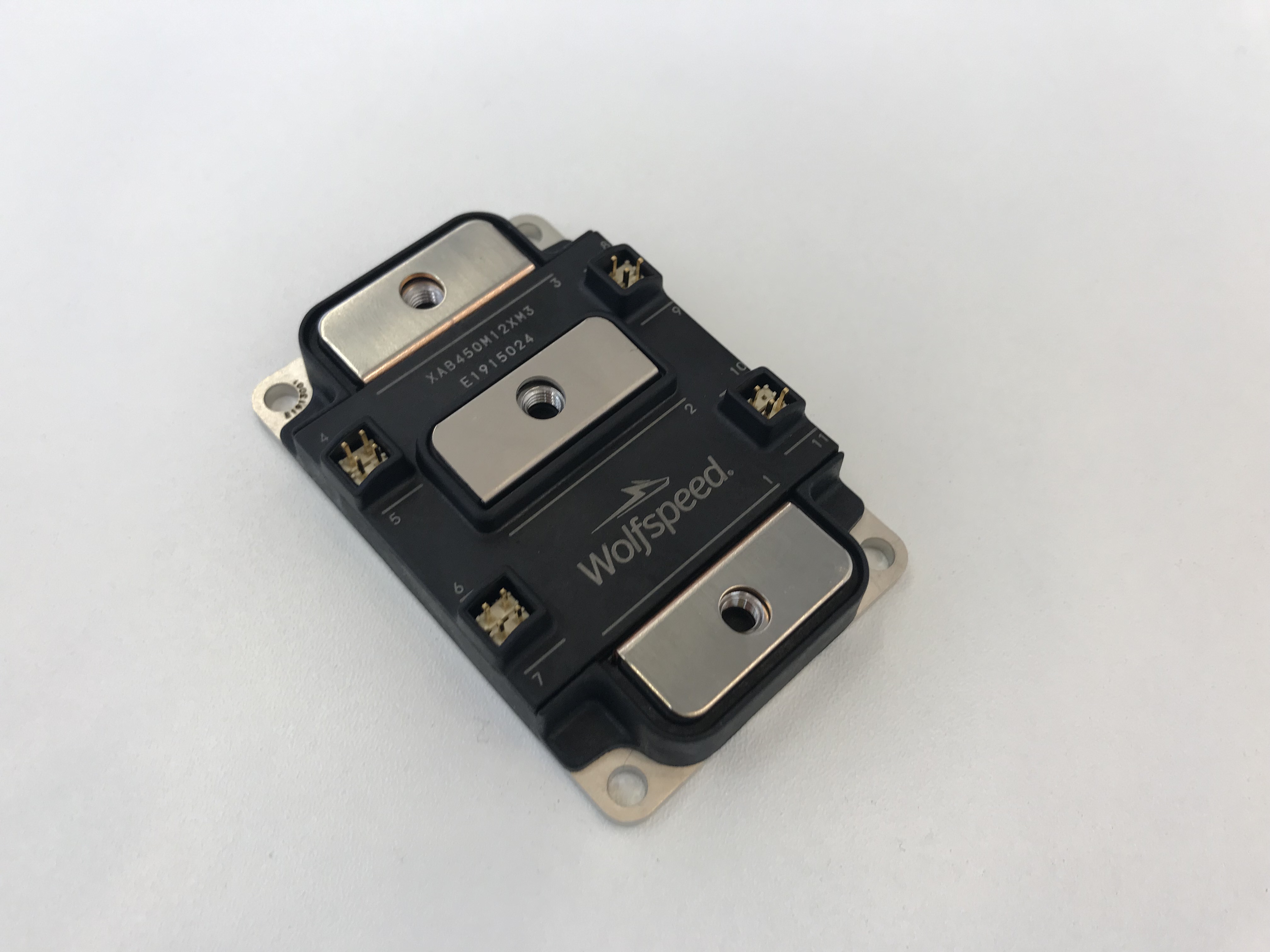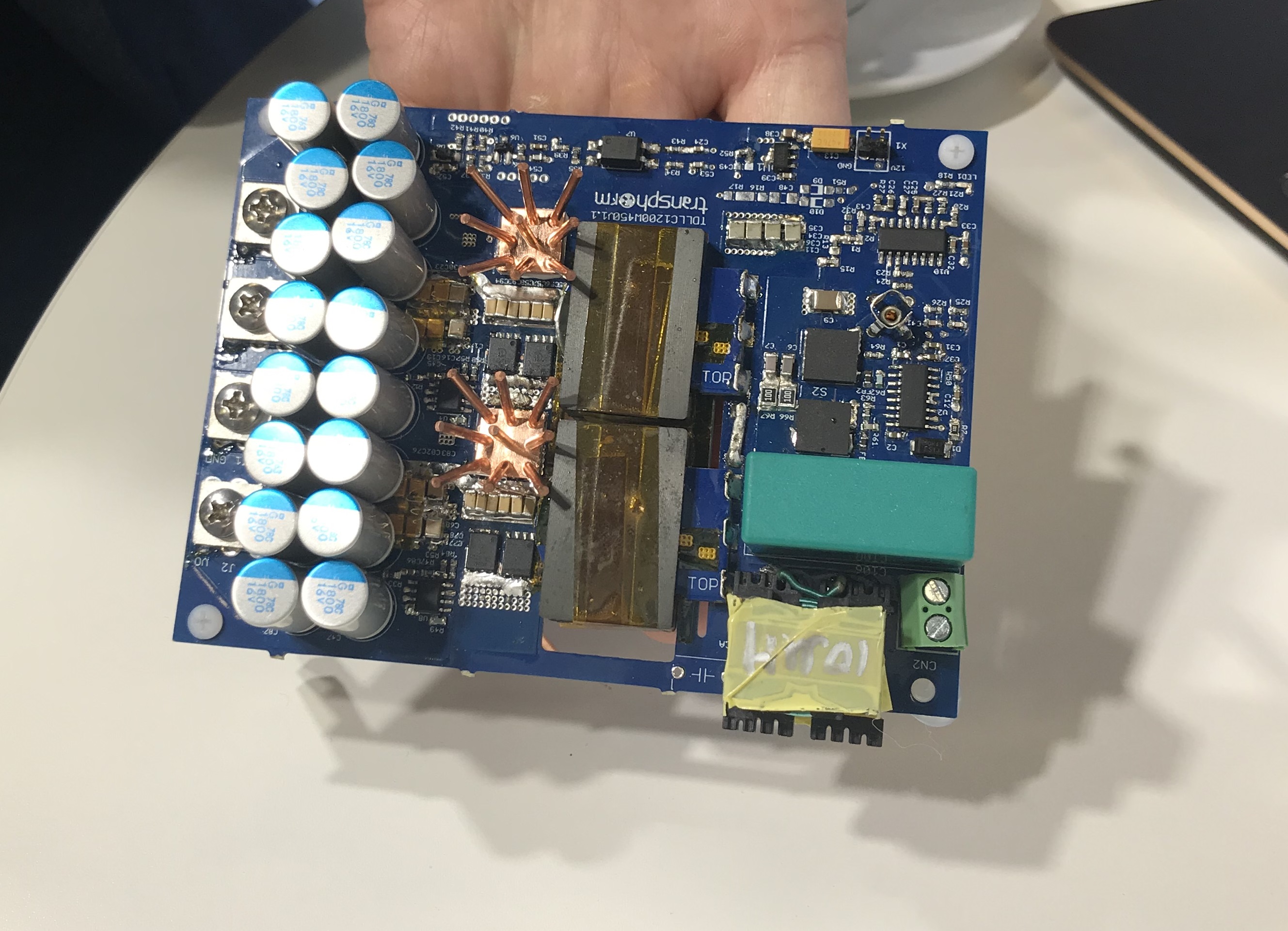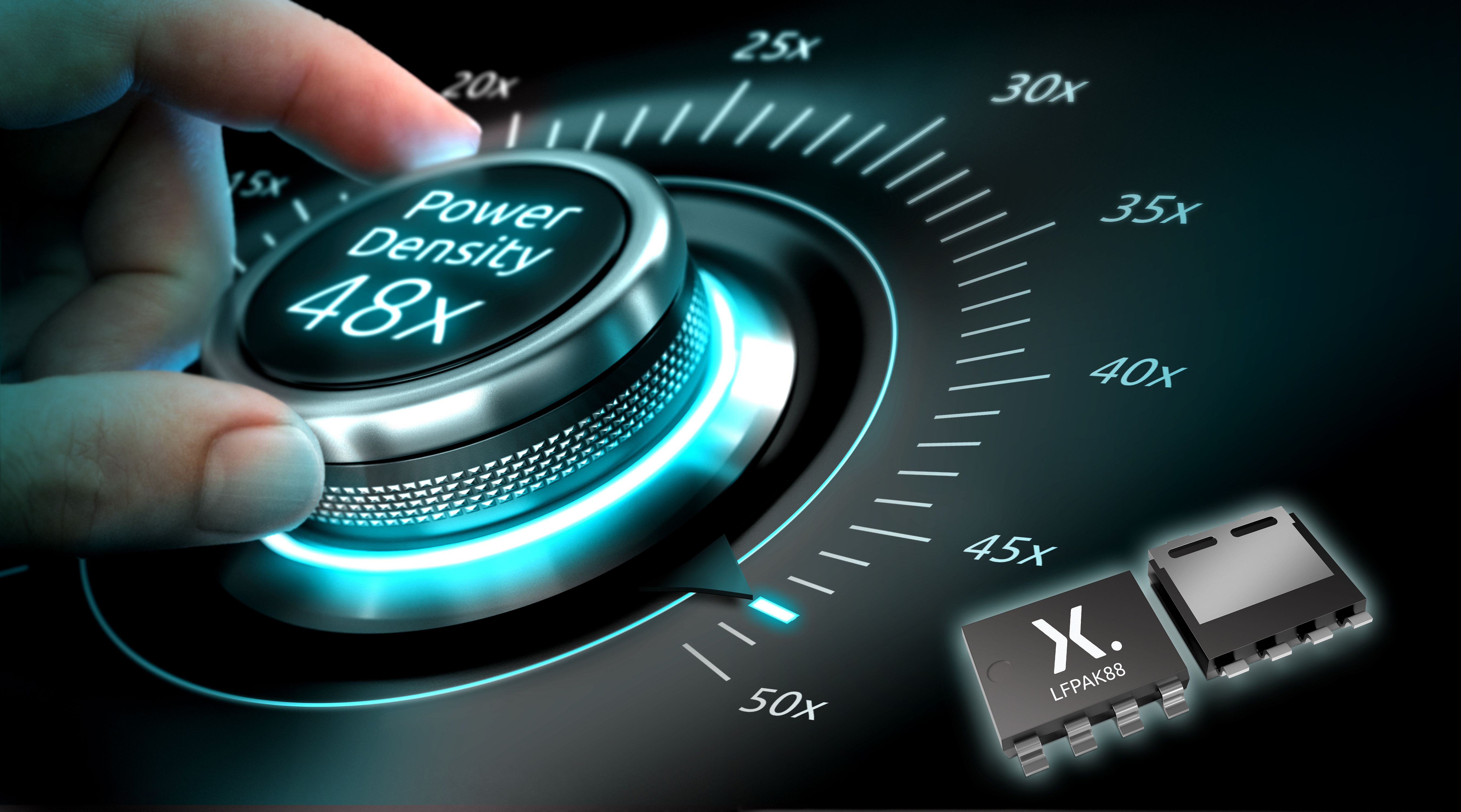PCIM Europe – where power is at the core of innovation
This year’s PCIM Europe was attended by a record number of visitors, over 12,000. Over half (54%) were from outside Germany. They came to see over 500 exhibitors and while the subject matter was diverse and wide-ranging, there were some themes that emerged. GaN and SiC jostled for attention at this year’s PCIM Europe, writes Caroline Hayes, alongside current sensor developments designed to accelerate adoption rates for electric vehicles.
Targeting the industrial market, Wolfspeed launched the XM3 SiC power module at this year’s show. It uses 1200V transistors. Jeff Casady, director, SiC Power Die and Module Products, explained that SiC is particularly suitable for industrial applications due to its very low power losses and high frequency operation. The module has a copper baseplate for efficient heat transfer and is less bulky and with a lower profile than a silicon equivalent, explained Cassady. The compact form factor and low inductance minimise power losses in industrial power equipment, uninterruptible power supply inverters and solar inverters. Cassady summed up the company’s approach to SiC: “We used to put SiC in packages, but now this module is built for SiC”.
 Cree's XM3 SiC module
Cree's XM3 SiC module
GaN technology
Showing the potential that GaN has already realised, Efficient Power Conversion (EPC) had a stand that was well-stocked with examples of the eGaN FET technology that the company introduced in 2009. The company concentrates on the 48V market where GaN has reduced the price of MOSFETs compared with silicon. “Silicon MOSFETs are more expensive,” confirms CEO and co-founder, Alex Lidow, making 48V eGaN FETs a viable option for drones, vehicle lidar systems and 5G basestations. The stand was also populated with an Elegant Audio Solutions demo for class D audio speakers, where GaN can perform multi MHz switching efficiently to improve the audio quality. The cost compared to silicon and low energy demands mean that GaN will be used in more 48V designs, many of which were demonstrated on the stand, including AirFuel wireless charging using the EPC-licensed ‘Olympic’ antenna. “In three years there will be no new designs at 48V, using silicon MOSFETs,” said Lidow.
At the other end of the GaN spectrum (650 V and higher) is Transphorm. Philip Zuk, vice president, worldwide technical marketing explained the company has a different target market and a different approach. With respect to the market today, he says, the company is seeing adoption in smaller volumes by early adopters who find that today’s technology is not satisfying their development needs.
One target area is communications. Infrastructure IT doesn’t have a strategy for power supplies, but it is more active in designing GaN for power supplies, which he believes will lead to its use in data centres, industrial uninterruptible power supplies (UPS) and battery chargers in the mid-term and automotive designs in the long term. Short term adoption, he says, will be fueled by the use of GaN in less than 100W adapters for mobile phones and PCs for a higher volume, broader portfolio of GaN designs.
The company used PCIM Europe to publicise field data from its GaN products; it claims to be the only company to do this. The physically field data looks at 400,000 devices and reports a failure in time (FIT) rate of 2.2, to put GaN on a par with SiC, said Zuk.
To promote developers to explore GaN, the company has introduced the TDHBG1200DC 100 evaluation board and the TDBH 65H070L-DC daughtercard and provides design files for customers online.
 Transphorm announced evaluation boards for GaN designs
Transphorm announced evaluation boards for GaN designs
A host of new modules could be found at GaN Systems, including the 150A 650V GaN E-HEMT, the latest addition to company’s HEMT range. The increased current raises output levels, broadening the range of uses, explained vice president, strategic marketing, Paul Weiner. There were some interesting examples of application uses, including Wibotic’s aerial and underwater drones and Bumblebee’s 600W wireless transfer power consumer products, which all use the company’s GaN devices.
Panasonic Industry Europe was highlighting its R&D into GaN with a bi-directional GaN transistor board for use in circuit breakers, hybrid relays and multi-level inverters in clamping circuits. There was also a 3kW GaN power factor correction (PFC) board operating at 99% efficiency. The company is also developing its module technology, illustrated by automotive SiC modules which have MOSFETs embedded in the die for low losses.
Current sensing
Allegro Microsystems previewed a current sensor that is 30% lighter for use in inverters. The 200 – 1600A automotive sensor uses gigantic magneto resistance (GMR) to replace Hall-effect technology. The sensor can be used in electric vehicles, as its steamlined assembly process requires less components, to reduce battery weight and increase efficiency. The sensor will be sampling in June, with volume production expected at the end of this year.
Infineon’s stand was divided into application areas, but of particular interest was the industrial section where the company introduced its Xensiv TL14971 sensor, designed for robotics, charging status and battery management systems and power tools. The coreless open loop current sensor is based on the differential voltage principle, using two Hall effect probes for the magnetic field, eliminating the need for a core, resulting in significant real estate savings. There is also an EEPROM to program parameters such as gain and over-current and reaction times is fast, just 1µs.
Product highlights
Apex Microtechnology presented a poster session with the University of Madrid on new ways of power efficiency. I caught up with Jens Eltze, who introduced the PA165 high density power amplifier IC. It joins the company’s PA164 which also uses MOSFET technology and proprietary silicon. The PA165 uses separate supplies for the amplifier core and the output stage to result in overall power dissipation capabilities of 28W of internally generated heat. It provides 4A output current continuously, and up to 10A PEAK on voltage supplies up to 200V. The compact device measures just 22 x 22mm in a PQ style package. It is designed to be self-protecting, said Eltze and for use in machines that operate 24/7 in high current conditions, in industrial, aerospace, test and medical equipment. On-board protection includes a user-defined, temperature compensated current limit and a temperature sensor output. There is also an output disable function and an over current alert.
At ON Semiconductor, visitors could explore the company’s digitally isolated technology which combines high speed operation with the reliability of an opto-coupler, explained Morten Feldstedt, marketing director for the Power Solutions Group. The interface logic, he explained, makes it universal, to isolate gate drives in control applications, such as smart meters in place of industrial interfaces. An automotive-certified version is to be announced and will be used in battery management systems for electric vehicles. A stand highlight was the NCD(V)57000 isolated high current IGBT drivers series which can be used for automotive powertrain, solar inverters, UPS and motor drives.
At the Analog Devices’ stand, the latest battery charging technology was highlighted with the company’s LTC2949 designed to extend the battery life and, in electric vehicles, to increase the range by up to 50%. There was also a preview of the LT8316 isolated flyback converter, which will be released this summer. Intended for use as an auxiliary power supply for inverters, it can operate at up to 800V. The stand also highlighted the LTC6813 18-cell battery monitoring device, with added safety functions, and the recently released ADµM4221 half-bridge gate driver.
Earlier this year, Analog Devices announced a strategic agreement with United SiC to develop SiC-based devices. The New Jersey-based SiC semiconductor manufacturer announced seven new package options for its general purpose (UJ3C) and hard switched (UF3C) 650V SiC FETs at the show. The TO220-3L and D2PAK-3L device/package combinations target data centre servers, telecomms and on-board chargers as drop in replacements for silicon IGBTs, silicon FETs, SiC MOSFETs or silicon superjunction devices and use the company’s cascade circuit configuration.
More package options were exhibited by Nexperia. The company introduced the latest version of its loss-free LFPAK88. The 8.0 x 8.0mm joins the 5.0 x 6.0mm package, which was introduced as a replacement for the DPAK.

Director of strategic marketing, Dirk Wittorf explained that in a 40V MOSFET, the package can deliver just 0.7mΩ resistance and reduce footprint size by 60%. The package design is attached via a copper clip and solder die to reduce electrical and thermal resistance, enhance current spreading and heat dispersal while reducing the formation of hot spots to improve power density by up to a factor of 48, compared to D2PAK devices. Gull wing leads increase reliability, by being rugged and thermally robust, continued Wittorf, to deliver reliability levels more than two times better than is required by AEC-Q101.
The LFPAK88 MOSFETs are available in automotive-qualified (BUK), for use in power steering and reverse battery protection, for example, and industrial (PSMN) grades for use in dual-redundant circuits, telecomms infrastructure equipment, power supplies and battery powered power tools.
Looking to emerging markets and the need for reliable AC lines in developing countries, Power Integrations was highlighting its 900V ICs, with global appeal for appliances, metering and wireless LANs in street lighting and power supply protection.
Research projects
An interesting project was the use of Danisense’s current transducers in the Large Hadron Collider as part of the recent upgrade at CERN (the European Organization for Nuclear Research). The Danish company’s zero-flux DC current transducers (DCCT) are part of the QTRIM power supplies which were upgraded from a unipolar SCR version to a bipolar design for the proton synchrotron booster which allows the synchrotron to accept more protons to enhance the beam’s use in experimentation at the European Laboratory for Particle Physics.










